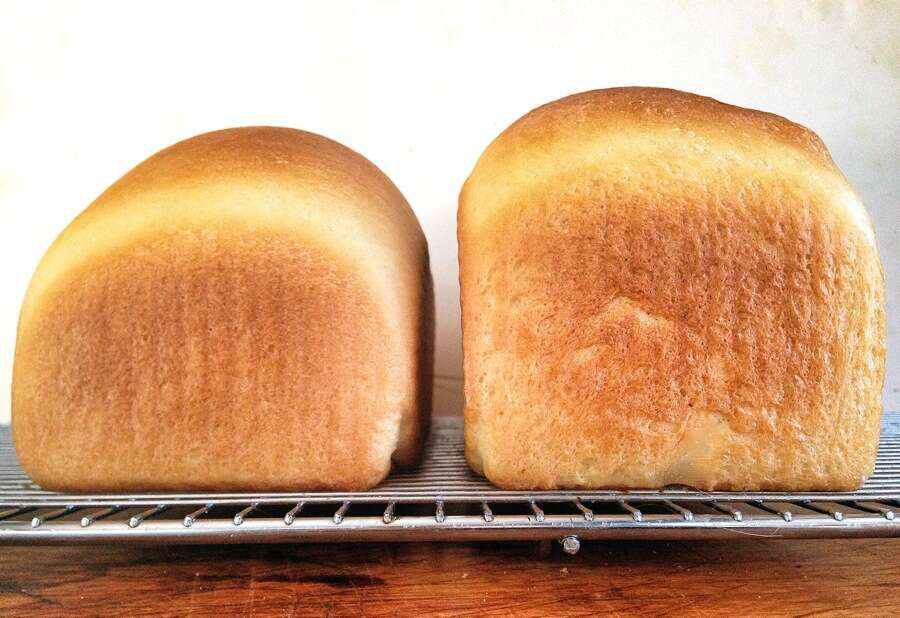An irresistible aroma of bread wafts into the kitchen, you run to the oven to check how your masterpiece turned out, but when you open it, disappointment! You discover that the bread deflated or sank in the center, what happened? Don’t worry; this has happened to all of us, even repeatedly. The important thing is to observe carefully and remember how you made the dough, so you can discover the small mistake that damaged your bread. How will you identify it? Easy! Next, we have prepared for you a brief but detailed guide in which you will find the possible causes for which the bread falls in the oven, as well as what to do when the bread dough does not rise.
The measurements or the way of applying the ingredients are incorrect
We are facing the most common cause, the one that causes more squashed breads in the world: inadequate amounts of ingredients have been applied in the preparation of the dough. This point is very important, not only because of the repeated times in which it occurs, but also because of the different factors that cause it, making it the most recurrent problem. These may be some of the ingredient faults that can explain why the bread does not rise in the oven:
You put a lot of yeast
In this case, although the bread rises normally at first, it then deflates during the second half of fermentation or during baking. This happens due to the loss of substrate. It could also happen because the amount of yeast is indicated, but the environmental temperature modifies the behavior of the ferment, so you need to reduce the amount of yeast.
You added little salt
Salt is very important for the proper development of bread, as it acts on the formation of gluten, reinforcing it (increases strength, tenacity, improves its manageability) and allowing greater water absorption (increases fixation). Remember, even if you use the right amount of salt; avoid adding it directly to the yeast, as it inactivates it.
You used very hot water or liquids
Just as yeast does not activate well in very cold water, it does not activate well in very hot water either. Do not forget that yeast is a unicellular fungus, a microorganism, that is, it is alive, so if you add very hot water you kill it and, therefore, it loses effectiveness. The ideal temperature to activate the ferment is lukewarm (you can put your finger in it without burning yourself), because if the temperature exceeds 35-45 ºC, it becomes too weak or inactive.
You used a lot of liquids in the mix
Excess liquid provides excessively elastic dough that can collapse during the bread making process. As a consequence, you can have cake bread as a result.
Remember also that the indicated ingredients must be used to prepare fluffy and delicious breads. In breads with gluten, strong flour is one of the most important elements of the recipe.
Kneaded for too long
Definitely, in the world of confectionery and baking, everything is based on formulas and techniques, since these provide balance to the preparation. The preparation of bread illustrates it very well, since we always hear about the importance of good kneading.
Although to obtain good bread we must work the dough for a long time, it is not advisable to overdo it either. Why? If you work the dough for too long, the mechanical breakdown of the gluten occurs, which causes the loss of gasification during the fermentation period (when the body of the bread is formed) and causes the collapse of the final product.
You will know that you can stop kneading when the dough has an elastic texture and its appearance is smooth, so now you know: knead well but without overdoing it!
The bread was baked before reaching the fermentation time
The best time to bake bread is when the dough is rising during the fermentation process. It should not be baked earlier, when the yeasts are inactive, nor much later when over-fermentation occurs.
In this way, the dough rises correctly during baking. Imagine your dough like a roller coaster, it goes up to the top and then it can only go down, so you have to bake it at the right time, not before, not after.
Temperature and humidity can collapse bread
As we mentioned at the beginning, yeast represents one of the most common problems in the bread preparation process. One of the factors that most affects the ferment is the temperature of the environment. If we don’t know how to adapt the ingredients to the temperature, the bread we prepare will also be affected.
To better illustrate it, let’s use this example: if the bread comes out perfect in the winter or in cold climates with a certain amount of yeast, it is quite possible in summer or in hot weather it will sink if you use that same amount. What is the solution? Very simply, decrease the amount of ferment (1/2 tsp. less) and chill the liquids in the fridge before using (they will warm up during preparation).
Tip: Ideally, the yeast should be mixed with warm or lukewarm liquids (neither cold nor very hot).
Baking temperature was not correct
Although the temperature of the oven is not a direct cause of bread sinking, it can significantly affect its growth. The ideal temperature for baking bread is around 180-220 ºC in home ovens.
If you use this temperature, gases are generated inside that help the bread in several ways:
- They favor its good development.
- They generate a thick crust.
- They contribute with a good crumb.
The ideal is to start from a high temperature at the beginning and, as the baking process progresses, reduce it. It is also very important that you have the oven pre-heated well in advance (10 minutes).
Lack of steam can damage the structure of the bread
Although steam is not as important as other factors when it comes to understanding why bread sinks, it is very important to obtain a final product with good structure. Steam allows our piece, particularly during the initial cooking stage, to correctly complete the gelatinization and caramelization processes.
What does this provide? A final product with a consistent but flexible crust, good volume and exquisite flavor.
What can happen if you don’t use steam? If you put the bread in and it is preheated to a very high temperature and there is no steam, the crust of the bread will harden very quickly, making it difficult for it to increase its volume. Consequently, you will get dry and compact bread.
Do you know the potential of your oven?
Finally, in order to be able to correctly manage the temperature of the bread, we must fully understand our oven, regardless of whether we are going to prepare aromatic bread or any simple pastry recipe. Home ovens are not like industrial ovens, as their temperatures are more imprecise. For this reason, the heat intensity of each oven is different.
To improve this problem, we must adapt the temperature of each recipe to the operation of our oven. You can do this by doing some preliminary cooking tests until you get the hang of it.



